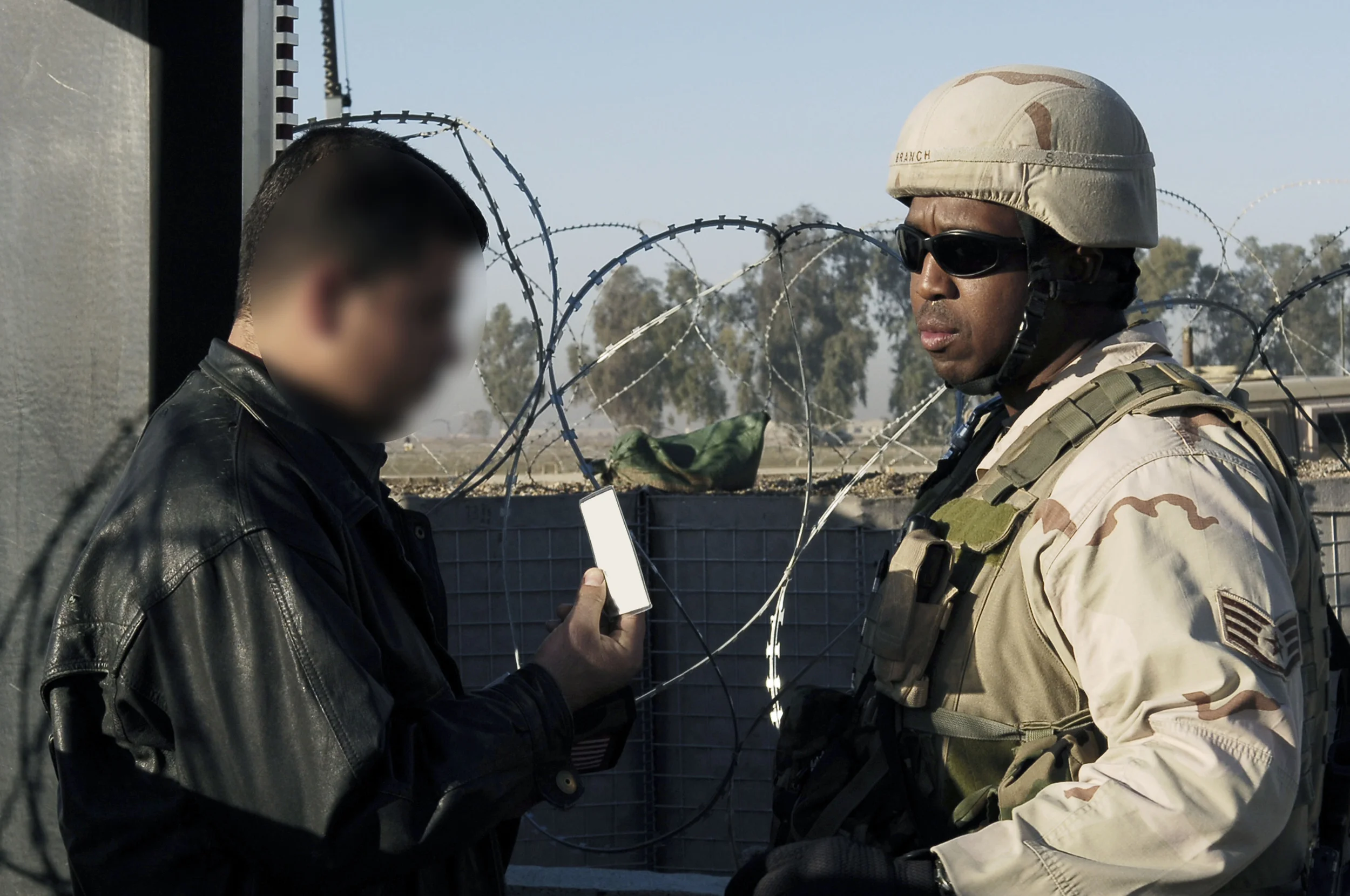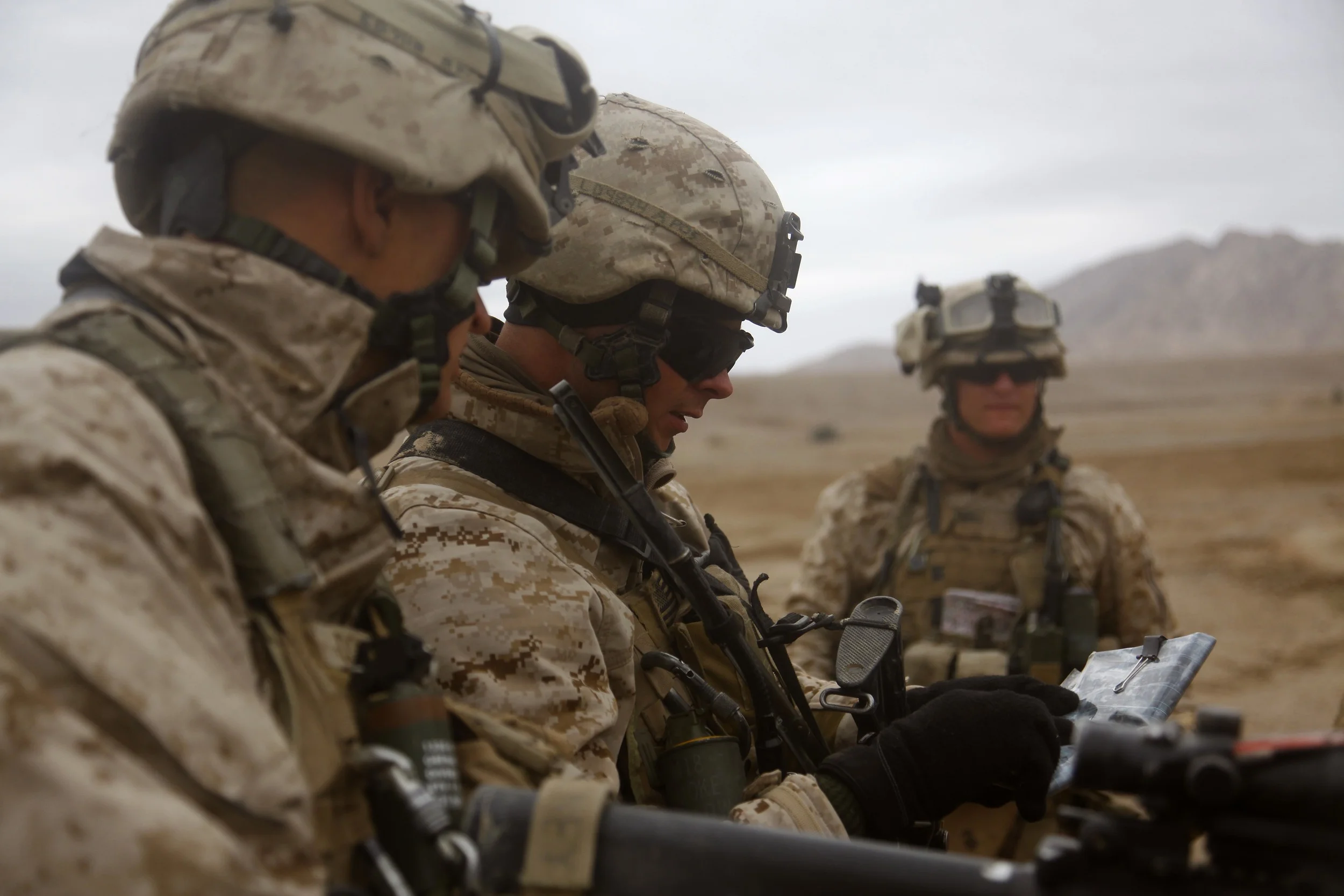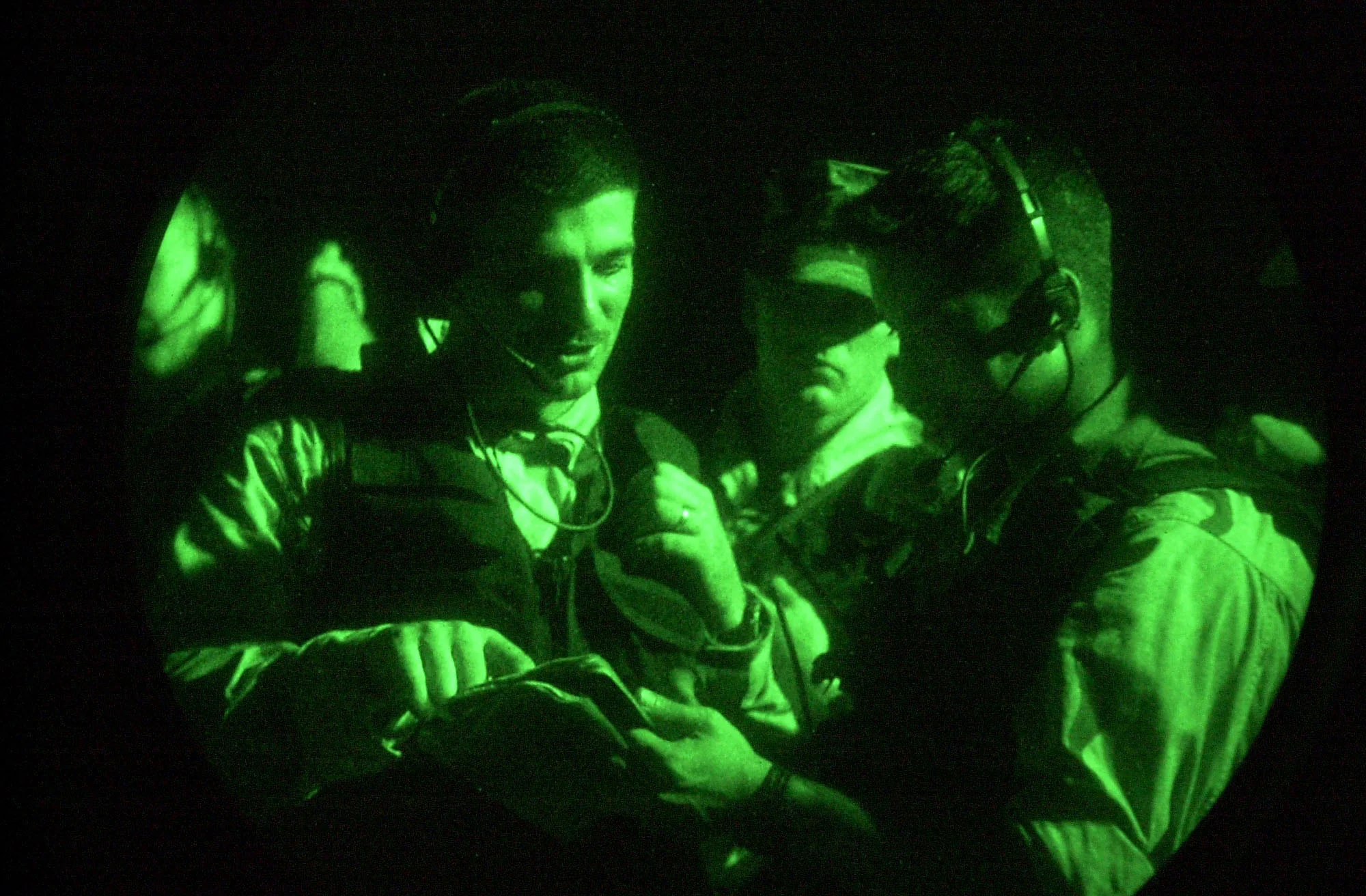"Against All Enemies" — Even the invisible ones
The people who support and defend our Constitution don't do it alone. Unlike most of the threats they face, radiation cannot be seen or sensed by people or animals. That's where Image Insight comes in. Whether it's a Military Police (MP) Company providing force protection, a dismounted patrol through a local village, a Visit, Board, Search, and Seize (VBSS) team searching a suspicious vessel, or a Carrier Strike Group (CSG) steaming toward a disaster area to support Humanitarian Assistance and Disaster Relief, GammaPix solutions from Image Insight can help our forces safely and efficiently accomplish their missions.
Force Protection
"Extraordinary Capability from Ordinary Devices"
Our forces are under constant threat from terrorism both at home and abroad. Traditional Anti-Terrorism/Force-Protection (AT/FP) measures mitigate conventional threats, but provide no security against radiation threats such as silent REDs (Radiation Exposure Devices) or dispersed radiation from an RDD ("dirty bomb").
Read More
In an RED, radioactive material is placed in a public location, out of sight. A hospital source could be made into 200 REDs that are potentially lethal with an hour of exposure at close range. REDs produced from a single hospital source could poison thousands of speactators. In a Radiological Dispersion Device (RDD), also known as a "Dirty Bomb", the radioactive material is dispersed with a conventional explosive leading to potentially widespread contamination.
Read Less
In the past, radiation detection required specialized equipment, but now GammaPix software can turn your existing infrastructure into a powerful network of radiation-sensitive devices. GammaPix Video turns IP security cameras into a fixed base of radiation detectors for your system. GammaPix Pro mobile apps can be installed on almost any mobile device to provide radiological monitoring with your mobile personnel. Built-in command and control functions and hands-free app options mean that the Base Defense Operations Center (BDOC) can manage the radiation situation and let personnel in the field focus on what's in front of them. All of these sensors can be networked and integrated with existing Command and Control (C2) systems via GammaPix Connect, or can feed into a standalone GammaPix Command system.
GammaPix solutions provide you with quick response and comprehensive situational awareness for any radiation event.
Dismounted and VBSS Patrols
Hands-free, Worry-free
Troops on a dismounted patrol and sailors on a VBSS operation have more pressing things to worry about than radiation. But if there's a pile of radioactive material in a house or a cargo hold, they should know about it. GammaPix can tell them.
GammaPix apps function on almost any mobile device and can operate hands-free in the background to monitor for ionizing radiation while personnel focus on their patrol. If elevated radiation levels are detected, the app can provide audible or vibrating alerts to personnel in the field while also notifying the ops center and providing them with situational awareness. App settings can be adjusted, and radiation data viewed both on the device and remotely, so control and information are where they need to be. Additionally, GammaPix can be networked and integrated with existing C2 systems via GammaPix Connect, or it can feed data into a standalone GammaPix Command system.
GammaPix solutions provide you with powerful radiation surveillance capability so you can focus on your mission.
Humanitarian Assistance / Disaster Relief (HADR)
Strength in Numbers
On 11 March 2011, the USS Ronald Reagan (CVN-76) and Carrier Strike Group Seven (CSG-7) took part in Operation Tomodachi to support disaster relief efforts following a major earthquake and tsunami in Japan. Each vessel in the Strike Group had its own sensitive Geiger counter on board to measure gamma radiation, and each of those meters gradually began to show increased gamma dose rates en route to Japan from normal background levels of around 0.01 mR/h up to 0.6 mR/h when they arrived on station 130 miles from the plant. A 60x increase in gamma exposure would be of minimal concern by itself — still well below the 2 mR/h threshold that First Responders in the US typically use to establish a safety cordon — but CSG-7 had unknowingly entered the plume of much more dangerous alpha- and beta-emitting radioactive airborne particulates.
Read More
The Strike Group was 100 miles away from where they expected the plume to be, based on Japanese reports, but on 13 March they realized that the high airborne particulate levels deep inside the Reagan's engineering spaces were not due to a malfunction of the ship's own system but to the Fukushima reactor more than 100 miles away. Airborne particulate radiation levels were expected to be nearly undetectable while CSG-7 was on station; in fact, they were so high that a member of the general public would have reached the EPA's "Protective Action Guide" (PAG) limit in 10 hours (based on call transcripts from Naval Nuclear Propulsion at that time). Because of the lack of timely and unambiguous information, the entire Strike Group was forced to relocated immediately, the flight deck and all aircraft had to be decontaminated following the Operation, and several Sailors have blamed subsequent cancers on the event.
Read Less
GammaPix sensors could have provided early warning that CSG-7 was entering the radioactive plume, and could have supplied radiation professionals at Naval Nuclear Propulsion in Washington, DC with distributed, networked, real-time sensor data to estimate the size, shape, and intensity of the plume. Instead, their initial computations were based on four data points recorded over the course of four hours.
GammaPix solutions capture the power of a real-time network to give you the information you need, so you can make critical decisions when they matter most.







